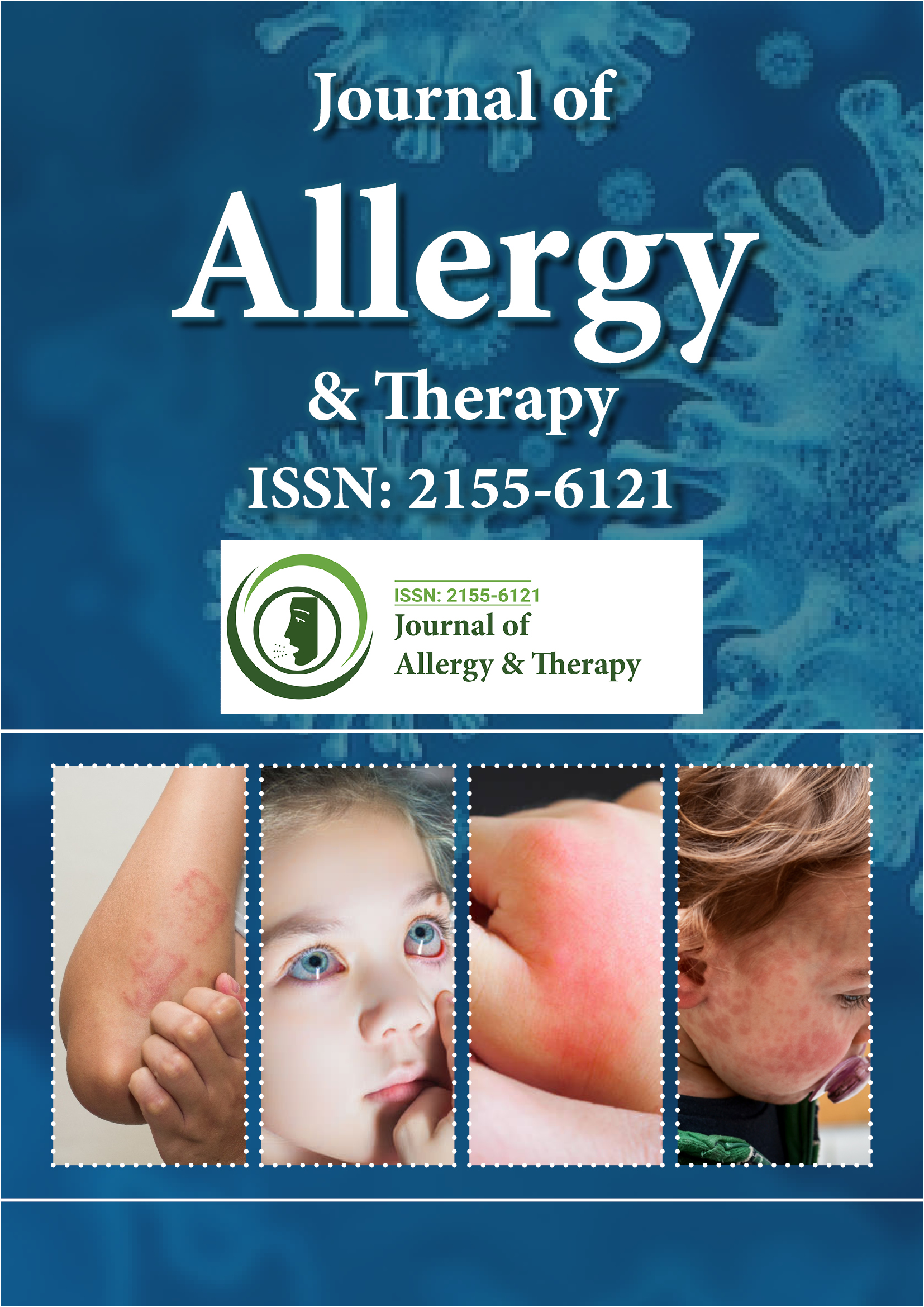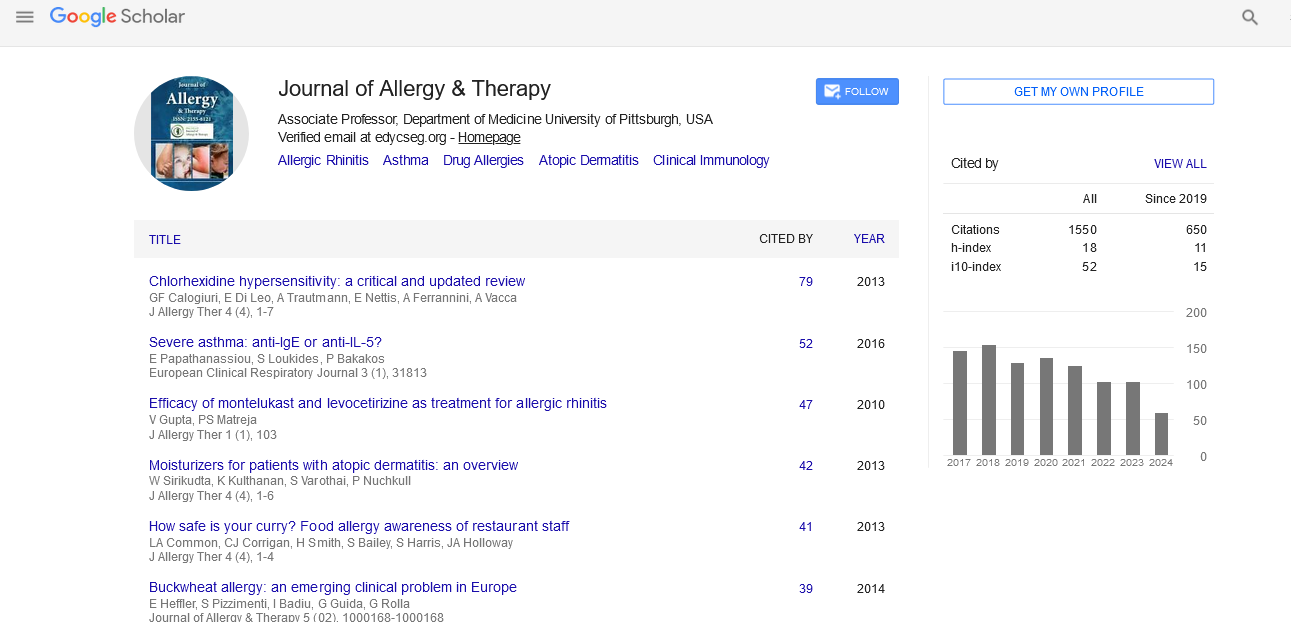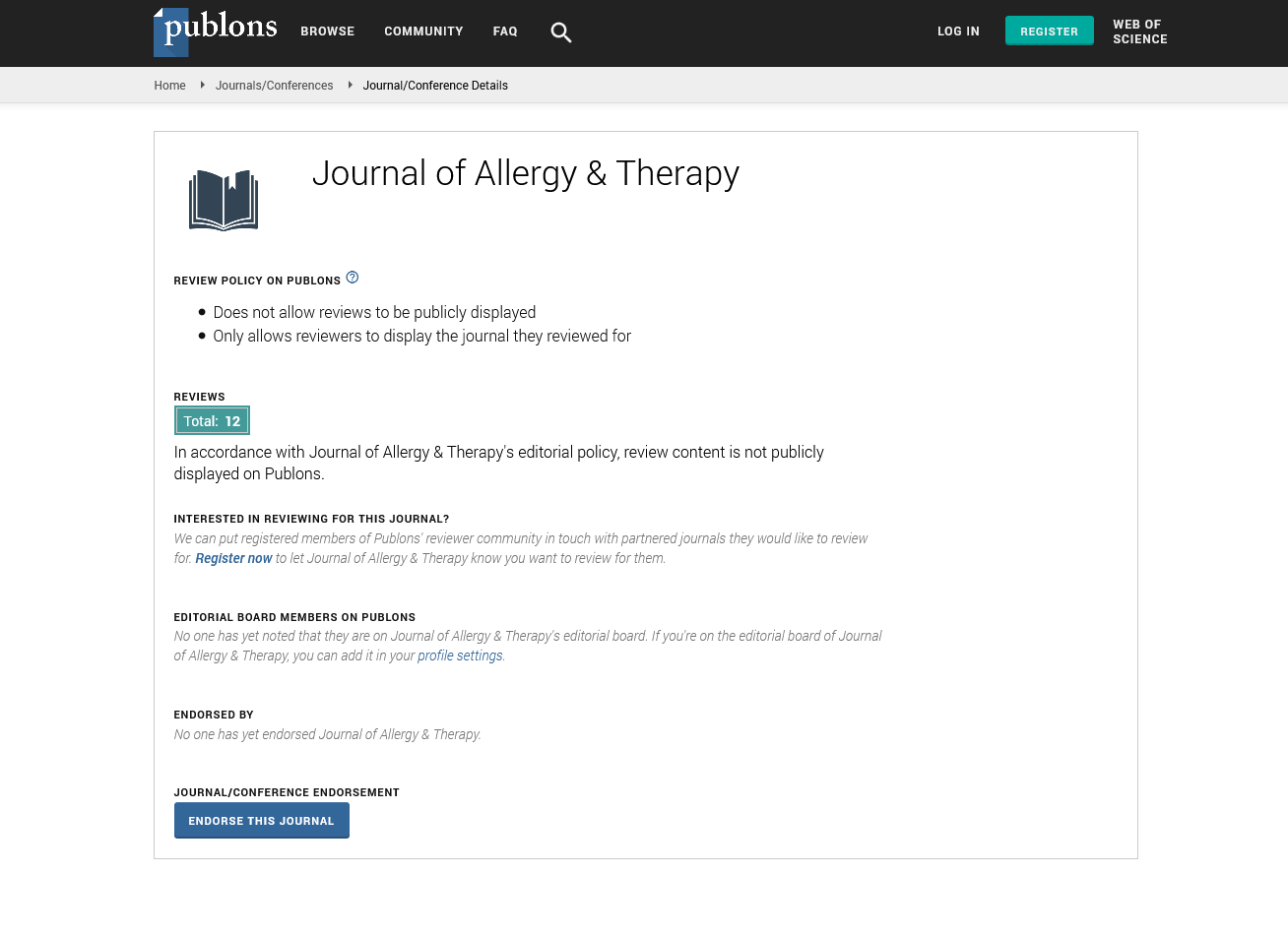Indexed In
- Academic Journals Database
- Open J Gate
- Genamics JournalSeek
- Academic Keys
- JournalTOCs
- China National Knowledge Infrastructure (CNKI)
- Ulrich's Periodicals Directory
- Electronic Journals Library
- RefSeek
- Hamdard University
- EBSCO A-Z
- OCLC- WorldCat
- SWB online catalog
- Virtual Library of Biology (vifabio)
- Publons
- Geneva Foundation for Medical Education and Research
- Euro Pub
- Google Scholar
Useful Links
Share This Page
Journal Flyer

Open Access Journals
- Agri and Aquaculture
- Biochemistry
- Bioinformatics & Systems Biology
- Business & Management
- Chemistry
- Clinical Sciences
- Engineering
- Food & Nutrition
- General Science
- Genetics & Molecular Biology
- Immunology & Microbiology
- Medical Sciences
- Neuroscience & Psychology
- Nursing & Health Care
- Pharmaceutical Sciences
Opinion Article - (2023) Volume 14, Issue 4
Causes, Symptoms, Treatment, and Prevention of Ocular Allergies
Pimenta Heum*Received: 28-Jul-2023, Manuscript No. JAT-23-23062; Editor assigned: 01-Aug-2023, Pre QC No. JAT-23-23062 (PQ); Reviewed: 18-Aug-2023, QC No. JAT-23-23062; Revised: 25-Aug-2023, Manuscript No. JAT-23-23062 (R); Published: 01-Sep-2023, DOI: 10.35248/2156-6121.23.14.360
Description
Ocular allergies, also known as allergic conjunctivitis or eye allergies, are a common condition affecting a substantial portion of the population. These allergies occur when the eyes react to allergens, leading to a range of uncomfortable and sometimes debilitating symptoms. In this comprehensive article, we will delve all aspects of ocular allergies, examining their causes, symptoms, diagnosis, treatment options, and strategies for prevention.
Understanding ocular allergies
Ocular allergies are allergic reactions primarily affecting the eyes. They are the result of allergens, which are typically harmless substances, coming into contact with the eyes and triggering an immune response in individuals who are susceptible to allergies. The most common allergens responsible for ocular allergies include:
Pollen: Pollen from trees, grasses, and weeds is a prevalent outdoor allergen that can trigger eye allergies, particularly during specific seasons.
Dust mites: These microscopic creatures are common indoor allergens, and their feces and body parts can become airborne, leading to eye allergies.
Pet dander: Allergenic proteins from cats, dogs, and other animals can induce eye allergies when they are released into the environment.
Mold spores: Mold spores, both indoors and outdoors, are a common allergen, becoming airborne when mold is disturbed.
Irritants: Certain irritants like smoke, smog, or chemical fumes can exacerbate ocular allergy symptoms.
Causes of ocular allergies
Ocular allergies result from an exaggerated immune response to allergens that come into contact with the eyes. When the immune system identifies these allergens, it releases chemicals like histamine, leading to the classic symptoms of ocular allergies. Several factors can increase the risk of developing ocular allergies, including:
Genetics: A family history of allergies can predispose individuals to ocular allergies.
Environmental exposure: Residing in areas with high pollen or mold spore counts can elevate the risk of ocular allergies.
Indoor allergen exposure: Being exposed to indoor allergens such as dust mites, pet dander, or mold can contribute to yearround eye allergies.
Occupational allergen exposure: Certain occupations involving exposure to allergens, like agriculture or woodworking, can increase the risk of ocular allergies.
Types of ocular allergies
Several types of ocular allergies exist, each with its own characteristics
Seasonal allergic conjunctivitis: This type of ocular allergy occurs seasonally and is often triggered by outdoor allergens like pollen. It typically coincides with hay fever and can cause intense itching and redness.
Perennial allergic conjunctivitis: Perennial allergic conjunctivitis is a year-round condition triggered by indoor allergens such as dust mites, pet dander, or mold. Symptoms can be chronic and persistent.
Vernal keratoconjunctivitis: Vernal keratoconjunctivitis is a more severe form of ocular allergy that primarily affects children and young adults. It is characterized by intense itching, photophobia, and the formation of small bumps on the inside of the eyelids.
Giant Papillary Conjunctivitis (GPC): GPC is often associated with contact lens wearers and is characterized by the formation of large papillae (raised bumps) on the inner surface of the upper eyelid. It can lead to discomfort and intolerance to contact lenses.
Diagnosis of ocular allergies
Diagnosing ocular allergies typically involves a comprehensive evaluation, including a detailed medical history, a physical examination, and often, allergy testing. Allergy testing may include skin prick tests or blood tests to identify specific allergens responsible for triggering the symptoms. In some cases, a referral to an allergist or immunologist may be necessary for a thorough allergy evaluation.
Treatment, preventive and management of ocular allergies
The effective management of ocular allergies comprises a combination of preventive measures and treatment options.
Allergen avoidance: Identify and minimize exposure to allergens that trigger ocular allergies. This may involve using air purifiers, regularly cleaning and dusting the home, and keeping windows closed during high-allergen seasons.
Wear sunglasses: Wearing sunglasses can help protect the eyes from allergens and reduce symptoms.
Limit contact lenses: If people wear contact lenses, consider limiting their use during high-allergen periods, as lenses can trap allergens.
Artificial tears: Over-the-counter artificial tear drops can help alleviate dryness and discomfort in the eyes.
Antihistamine eye drops: These prescription or over-the-counter eye drops can reduce itching and redness.
Decongestant eye drops: Decongestant eye drops can help relieve redness and swelling but should be used sparingly and under the guidance of a healthcare provider due to potential rebound effects.
Mast cell stabilizers: These eye drops help prevent the release of histamine and other allergic chemicals. They are often used for long-term management.
Corticosteroid eye drops: In severe cases, corticosteroid eye drops may be prescribed to quickly alleviate symptoms, but they should be used cautiously and under medical supervision due to potential side effects.
Immunotherapy: For individuals with severe and persistent ocular allergies, allergen-specific immunotherapy (allergy shots or sublingual tablets) may be recommended to desensitize the immune system to allergens.
Conclusion
Ocular allergies can significantly impact an individual's quality of life, causing discomfort and distressing symptoms. Understanding the causes, symptoms, and management options is essential for those affected by these allergies. By implementing preventive measures, seeking medical advice when necessary, and exploring appropriate treatments, individuals with ocular allergies can enjoy better eye health and a reduction in allergyrelated discomfort.
Citation: Heum P (2023) Causes, Symptoms, Treatment, and Prevention of Ocular Allergies. J Allergy Ther. 14:360.
Copyright: © 2023 Heum P. This is an open-access article distributed under the terms of the Creative Commons Attribution License, which permits unrestricted use, distribution, and reproduction in any medium, provided the original author and source are credited.


